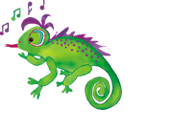Can Do Muses
2024 May
Featured music today used to be called “listening” music. What music isn’t “listening” music? Hmmm …
I remember “listening” music in school as being –that long stuff that was boring–. Now maybe that’s because my teachers chose long pieces that gave them a break from doing anything, or maybe it’s because it was the 1960s and most of school was sit still and listen.
Now it’s called “active listening” and reminds teachers and students that listening can be active —with the imagination, with conducting skills, with visual arts, with movement/dance, with exploring patterns and, and, and … Engage minds and hearts in music that allows us to roam and create and with ideas and hands.
Lessons
Each lesson builds on the one before so that concepts grow in complexity through the year. Practice and review are planned into lessons. Canadian curriculum expectations are detailed at the beginning of every lesson (and in the overview). This is a complete music curriculum including music literacy, performance, instrument playing and active listening. Songs are suggested, but may easily be switched with your own favourites. As long as the planned teaching points are covered, all curriculum expectations will be met.
Grade 1 - Music Dance & Drama
Begin with the basics for students and teachers. Music, dance and drama combine to cover curriculum expectations in two fine arts lessons a week.
Grade 2 - Music & Dance
Review Grade 1 music concepts then move into growing those concepts through new and familiar music. Focus on solidifying the basics --beat, rhythm and reading rhythm.
Grade 3 - Music
Review music concepts from Grades 1-2 while adding a few new ones. Lots of time in the lessons for using concepts in performance and composition. Music pre-literacy is the focus of the second half of the year in preparation for learning to read the musical staff in Grade 4.

About Can Do
Create your own music lessons using some of the resources on the site, or, if you’re new to teaching music, try following a few of the lessons given here. Whatever you use –my hope is that “Can Do Music” helps to make music in your classroom and life. To learn more about the site and its creations, explore the links below.

 to Can Do Music
to Can Do Music